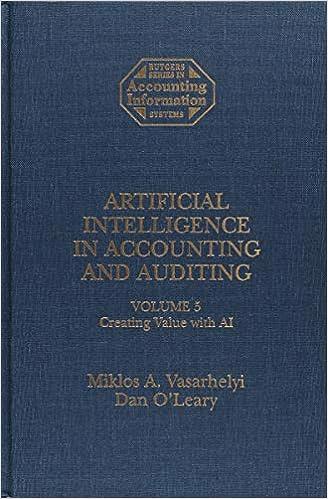Question
Ben planned on preparing a neutral, objective analysis of facts. He gathered and estimated additional accounting information related to refitting the plant. Without refit- ting
Ben planned on preparing a neutral, objective analysis of facts. He gathered and estimated additional accounting information related to refitting the plant. Without refit- ting the plant, Ben estimates that Lorman can sell 10 mil- lion lumber units per year at $50 per unit (see Table 1). The $50 lumber unit represents a hypothetical package of all Lorman lumber products sold to customers based on the historical proportion of past lumber product sales. The current variable costs are $10 for each lumber unit, and the plants current fixed costs are $60 million per year.
If the plant is retooled, the initial upfront investment costs are likely to be around $65 million. The investment cost to refit the plant could optimistically drop to around $55 million if the project runs according to plan. Cost overruns could drive the cost of refitting the plant up to a pessimistic estimate of $80 million. Lorman depreciates such capital investments over 20 years using the straight- line method for tax purposes. If refitted, the factory will be shut down for one year. There will be no production for one year, and reduced capacity of eight million lum- ber units in the following year (i.e., Year 2). Beginning in Year 3, a realistic estimate shows that capacity could be increased to around 12 million lumber units per year because of increased capacity and efficiencies from the new system. The sales price will remain $50 per lumber unit, but variable costs could decrease to a realistic esti- mate of $6 per lumber unit, and fixed costs could decrease to a realistic estimate of $40 million per year as a result of refitting the plant. Beginning in Year 2, the oper- ational closed cycle system will be able to reclaim 100,000 gallons of chemical waste material, which can be sold to chemical producers for $30 per gallon.
Assume that the corporate tax rate is 40% and that Lorman receives immediate tax benefits from tax losses. Lorman uses a hurdle (discount) rate of 10% and evalu- ates capital investments of this nature over a five-year time horizon when computing a net present value (NPV) analysis (i.e., Lorman requires capital investments to have a positive NPV within five years). Lorman also uses the payback period as a benchmark for capital investments and requires accepted capital investments to have a pay- back period within five years. The numerical information is summarized in Table 2.
Perform an economic cost-benefit analysis of whether or not capital should be invested in the closed cycle system. Clearly state your decision and conclusion from your analysis. Prepare a net present value (NPV) analysis and a payback period analysis as part of your economic analysis. (The NPV and payback period analyses can be organized neatly in an appendix to your case analysis. A reader of your case should be able to follow your work and computations. You can use an Excel spreadsheet. The results of your appendix analyses can be referenced in the body of your case to support your 

Step by Step Solution
There are 3 Steps involved in it
Step: 1

Get Instant Access to Expert-Tailored Solutions
See step-by-step solutions with expert insights and AI powered tools for academic success
Step: 2

Step: 3

Ace Your Homework with AI
Get the answers you need in no time with our AI-driven, step-by-step assistance
Get Started


